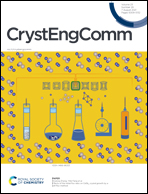Effects of the initial flux ratio on CeSb2 crystal growth by a self-flux method
Abstract
CeSb2 is a homologue of rare-earth diantimonides. This work reports a systematic study of a series of high-quality single crystals of CeSb2 grown by a self-flux method, which is a heavy fermion Kondo metal with intricate magnetic transitions. We have grown four types of crystals with different initial material ratios in order to investigate the effect of growth conditions on the quality of the as-grown crystals. The phase purity, morphology and composition of the synthesized samples were studied with X-ray diffraction, scanning electron microscopy, electron-probe microanalysis, and Raman-scattering spectroscopy to evaluate their quality. It is found that an inappropriate raw material ratio will lead to the inhomogeneity and poor crystallinity of the as-grown crystal. In addition, the electrical transport properties of the as-grown crystals were measured, from which the residual resistivity ratios were extracted to further examine the homogeneity and crystalline quality. Furthermore, the magnetoresistance properties of CeSb2 were observed. Through a systematic study on CeSb2, the most suitable starting ratio for the growth of CeSb2 was obtained, which might serve as a guide for the growth of other light rare-earth diantimonides.

- This article is part of the themed collections: Crystal Growth and Editor’s Collection: Rare Earth Materials


 Please wait while we load your content...
Please wait while we load your content...